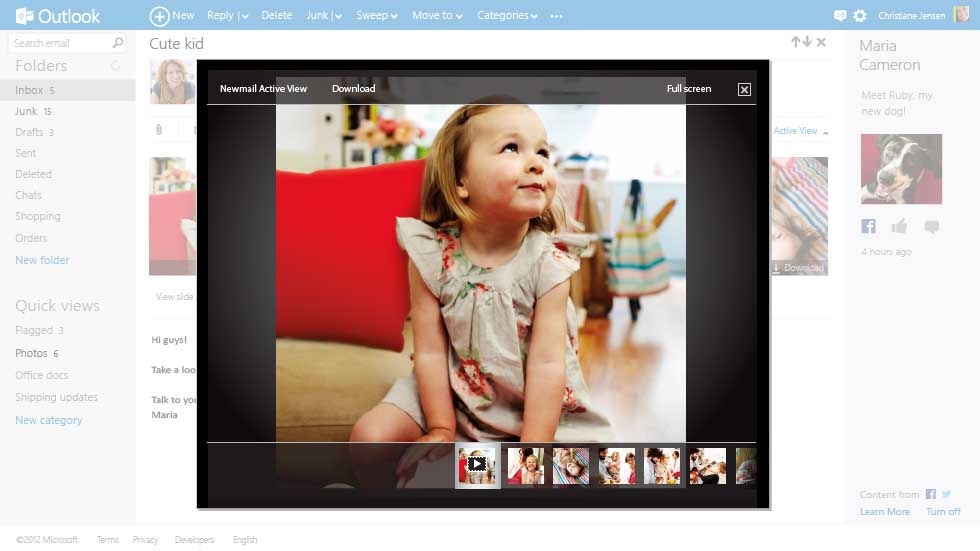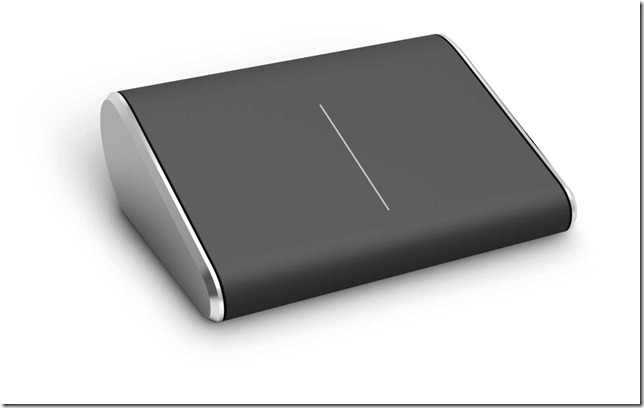In this edition of The Midweek Download, we’ve got stories on the debut of Outlook.com, new Windows 8 devices from Microsoft Hardware and more.
Introducing Outlook.com. Recently, we talked about how we’ve reimagined cloud services for Windows 8 and Windows Phone. And we described new apps for Windows 8, updates to SkyDrive, and how cloud services power the new Office Preview. We’ve also been hard at work on a mission to reimagine personal email – from the datacenter all the way to the user experience. Now, we’re starting to deliver on that goal with a preview of the new Outlook.com – modern email designed for the next billion mailboxes. Head on over to the Outlook Blog and the Microsoft News Center for the whole story. Below is a screenshot of the new Outlook.com.
Microsoft Hardware delivers on Windows 8, good Looks and mobility. In the coming weeks and months, Microsoft will introduce two new Bluetooth-enabled keyboards and mice to the market – the Wedge Touch Mouse, the Wedge Mobile Keyboard, the Sculpt Touch Mouse, and the Sculpt Mobile Keyboard. On Oct. 26, the general availability date of the new Windows 8 operating system, Microsoft will also release updated Windows 8 gestures for the Microsoft Touch Mouse. The Microsoft News Center has a story featuring a slideshow of some of the devices. Also, don’t miss this Windows Experience Blog post with more detail on the news. Below is a screenshot of the Wedge Touch Mouse.
Simplifying printing in Windows 8. Of all the peripheral devices that you can connect to your Windows PC, printers are one of the most popular, and have been supported for the longest time. In fact, Windows 1.0 (shipped in 1985) supported “a number of printers and plotters” and included a “Print Spooler [which] allows the user to work on one file while printing on another” according to the Windows 1.0 Press Kit. In Windows 8 we’ve introduced a new printer driver architecture, which we call version 4, or v4. The v4 architecture produces smaller, faster printer drivers, and it supports the idea of a print class driver framework–a system that allows people to install their printers without having to locate a driver for that device, in many cases. You can read more about this topic over on Building Windows 8.
Using HTML controls to create great Metro style apps. With Windows 8, you can use HTML to build Metro style apps. What you might not realize is that by using HTML controls directly, you automatically get the new Windows 8 experience. We have done work in HTML so that you can build industrial strength apps that have touch capability while still maintaining the great flexibility of using HTML. We want you to quickly and efficiently build apps that shine. For more information, head on over to the Windows 8 App Developer Blog.
Web performance APIs rapidly become W3C candidate recommendations. We’re pleased to share that three new W3C Web Performance Working Group specifications moved to W3C Candidate Recommendations. Accurately measuring the performance characteristics of Web applications is critical to making the Web faster. In addition, developers need the ability to effectively use the underlying hardware to improve the performance of their applications. Over the last two years, companies including Microsoft, Google, Mozilla, Intel, and Facebook have been working toward these goals through the working group. This is a great example of what’s possible when the industry and community come together through the W3C. The IEBlog has the whole story.
Windows Azure and Office 365. The recent Beta release of Microsoft Office 365 and SharePoint introduced several great enhancements, including a bunch of developer improvements. Developers can now extend SharePoint by creating web apps using ASP.NET (both ASP.NET Web Forms and now ASP.NET MVC), as well as extend SharePoint by authoring custom workflows using the new Workflow Framework in .NET 4.5. Even better, the web and workflow apps that developers create to extend SharePoint can now be hosted on Windows Azure. We are delivering end-to-end support across Office 365 and Windows Azure that makes it super easy to securely package up and deploy these solutions. You can read more about it over on Scott Guthrie’s blog. Scott is corporate vice president in the Server & Tools Business.
Thanks for reading The Midweek Download! Drop by The Official Microsoft Blog on Friday for another edition of Weekend Reading.
Posted by Jeff Meisner
Editor, The Official Microsoft Blog



